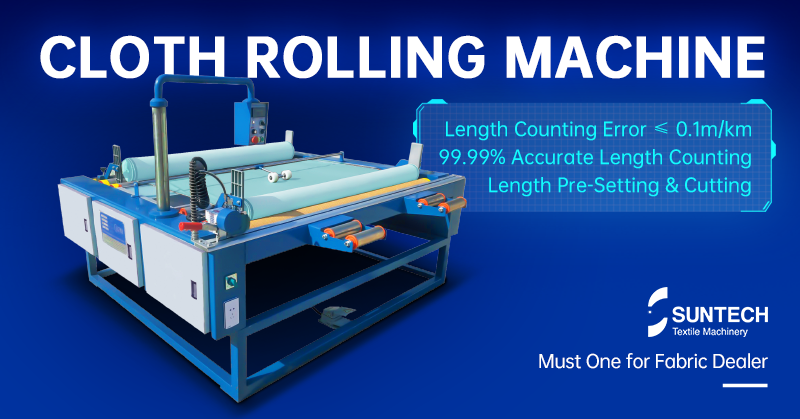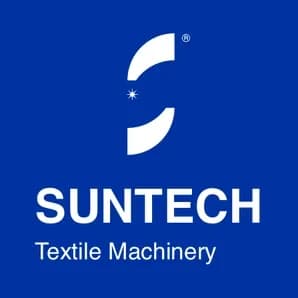
In the textile industry, fabric rolling machines play a key role in handling and preparing fabrics. These machines are made to roll large sheets of fabric into manageable rolls. Which makes storage, transportation, and further processing far easier and more efficient.
Basic Components of a Fabric Rolling Machine
At the core of any fabric rolling machine are several essential components, such as rollers, guiding mechanisms, tensioning systems, and control panels, all of which work together to roll fabric evenly and smoothly.
Rollers. The primary part of a fabric rolling machine. Rollers pull and guide the fabric through the system. And they apply consistent pressure to form the fabric into a compact roll. Multiple rollers can be used to adjust fabric tension, helping to avoid wrinkles and overstretching.
Guiding Mechanism. The component works alongside the rollers to keep the fabric properly aligned. It ensures the fabric is fed smoothly and evenly, preventing uneven rolling or misplacement, especially important when processing wide fabrics.
Tensioning System. Controls how tightly the fabric is rolled. The system applies uniform tension to prevent stretching or sagging. The tension level can be adjusted subject to the fabric type, ensuring even delicate fabrics are handled carefully.
Control Panels. Allows operators to adjust key settings like roller speed, fabric alignment, and tension levels. Modern machines may feature digital displays and automatic settings for more precise and simplified operation.

Operational Mechanism
The fabric rolling process starts with the fabric being loaded onto a feed roller. As the fabric unwinds, it moves through guiding rollers that keep it aligned and smooth. The motor then activates, driving the rollers to begin rolling the fabric. The motor’s speed can be adjusted according to the fabric type—thicker fabrics may need slower speeds to avoid excessive tension, while lighter fabrics can be processed more quickly without risk of damage.
Throughout the operation, tensioning systems apply just the right amount of force, ensuring the fabric remains evenly rolled and free from wrinkles or stretching. Once the entire fabric length is rolled, sensors or the control panel signal the machine to stop. At that point, the completed roll is ready for removal, storage, or shipping.
Fabric Handling Techniques
A fabric rolling machine is engineered to handle various types of fabrics.
Delicate fabrics, such silk or chiffon, call for a gentler touch. The machine's tensioning system guarantees that these fragile parts are not pulled too tightly, thereby avoiding possible stretching or tears. When handling such materials, the rollers also rotate at slower speeds to keep control and stop any damage.
Like denim or upholstery, heavier fabrics demand more strong handling. To properly roll these thicker materials, the machine runs faster roller speeds and greater tension. The guiding system guarantees even rolling independent of fabric weight.
Fabric rolling preserves an even surface free of wrinkles or distortion. Together, the sophisticated tensioning and guiding systems ensure the fabric is rolled uniformly, leading to neat and compact rolls.

Automation and Technology Integration
Recent years have seen a great leap forward in fabric rolling machines, which have ridden the wave of sophisticated technology integration.
Automated tension control is among the most important changes. Modern machines use sensors and computerized systems to automatically control tension, unlike traditional ones where operators manually changed tension for various fabric types. These sensors track weight and fabric thickness constantly, adjusting real-time to guarantee even rolling.
Key innovations are digital monitoring systems. Control panels showing live data on roller speed, tension, and fabric alignment let operators instantly adjust to maximize performance. This degree of control lowers machine downtime and helps to minimize mistakes. Certain machines also include software tracking of fabric weight and length, enabling manufacturers to keep constant production standards. These technological integrations reduce human error, thus streamlining the process and improving fabric quality and overall efficiency.
Benefits of Using a Fabric Rolling Machine
Fabric rolling machines is beneficial to textile manufacturers in many ways:
Time Efficiency. Fabric rolling machines significantly speed up the fabric rolling process compared to manual methods, enabling higher output in less time.
Consistent Results. Fabric rolling machines provide uniform tension and precise alignment, ensure every consistent roll free from wrinkles, and evenly wound.
Reduced Labor Costs. Automation reduces manual labor, lowering operational costs
Preservation of Fabric Quality. By means of precise tension control, these machines handle delicate fabrics carefully, preventing damage and maintaining fabric integrity.
Next Step
Should you intend much value to your own textile businesses, don't hesitate to reach out to SUNTECH. For we boast advanced fabric rolling machines with features like precise length measurement, automatic tension control, and customizable options for various fabric types. Which has brought us to the forefront of the industry.









